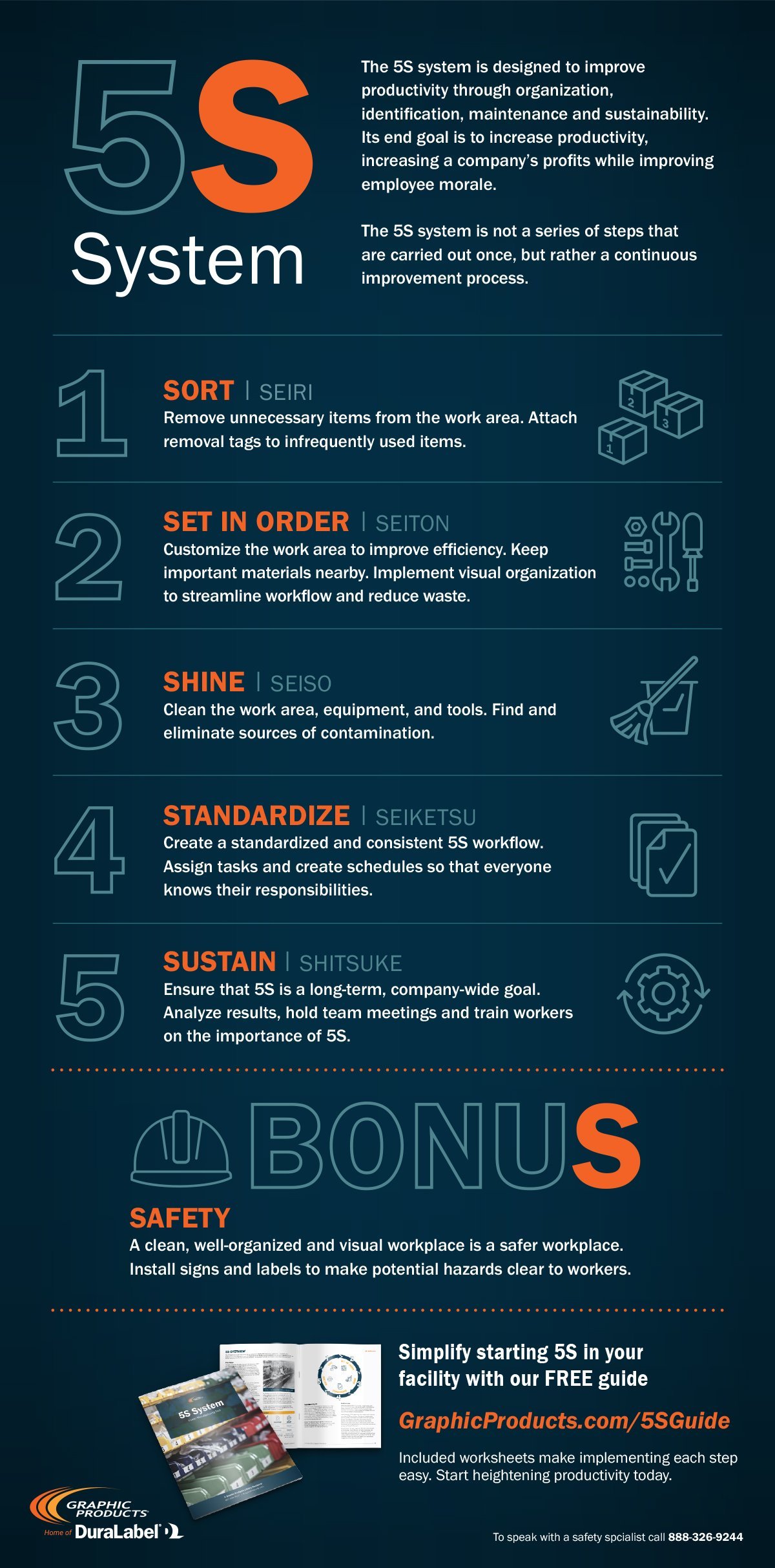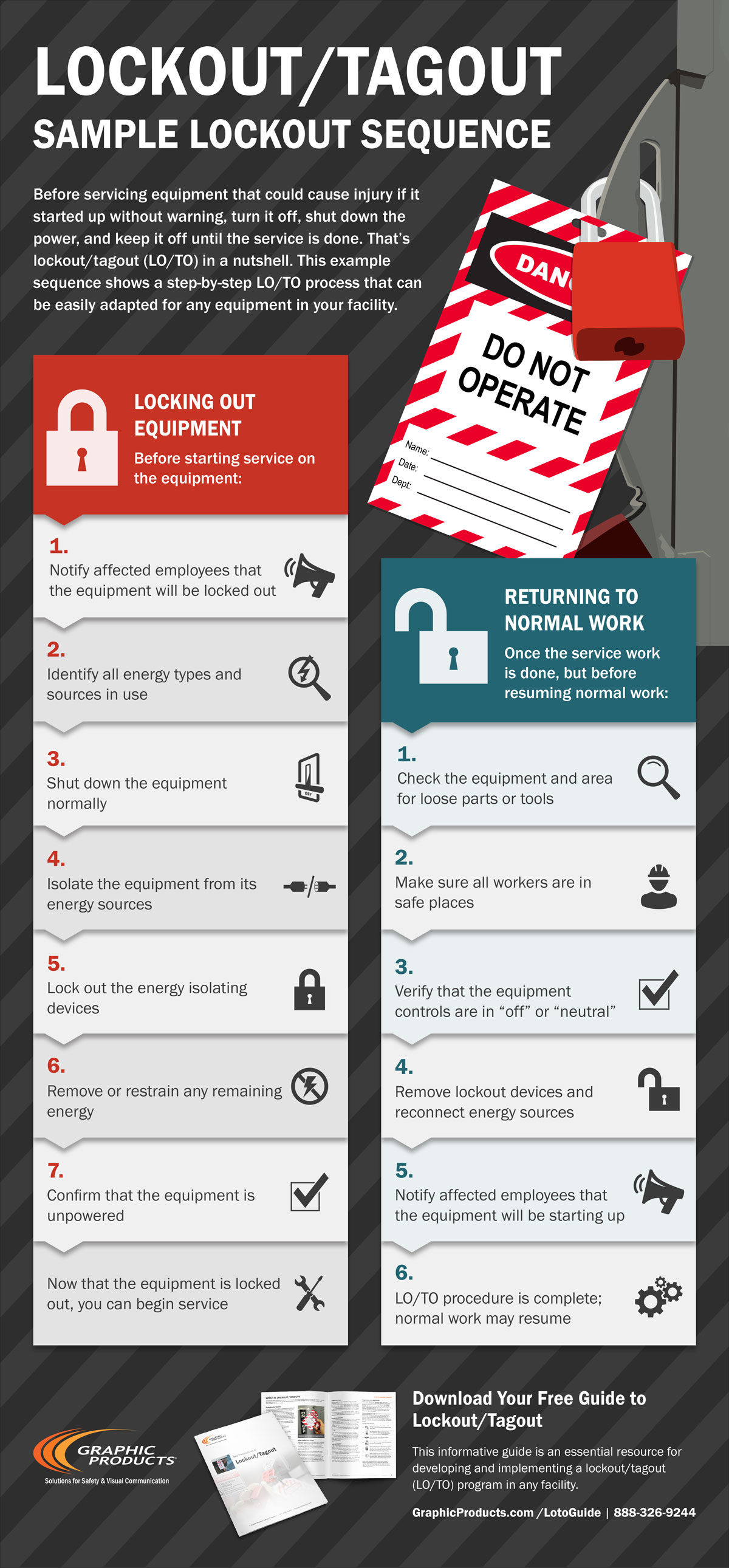- Home
- >
- Resources
- >
- Infographics
- >
- Sample LO/TO Sequence
Resource Navigation
Sample LO/TO Sequence
03
February,
2023
1 MINUTE READ
Procedures for Lockout/Tagout, or LO/TO, are critical elements of a safe approach to equipment maintenance or service. Each year, many workers are injured or killed on the job due to a failure to properly lock out equipment before work.
Violations of OSHA's LO/TO rules have been one of the ten most frequent citations nationwide for the last five years. This infographic will help you kick start a compliant plan for your facility, avoid fines and save lives.
The following is a transcript of the Sample Lockout Sequence Infographic:
Lockout/Tagout
Sample Lockout Sequence
Before servicing equipment that could cause injury if it started up without warning, turn it off, shut down the power, and keep it off until the service is done. That's lockout/tagout (LO/TO) in a nutshell. This example sequence shows a step-by-step LO/TO process that can be easily adapted for any equipment in your facility.
LOCKING OUT EQUIPMENT
Before starting service on equipment:
- Notify all affected employees that the equipment will be locked out
- Identify all energy types and sources in use
- Shut down the equipment normally
- Isolate the equipment from its energy sources
- Lock out the energy isolating devices
- Remove or restrain any remaining energy
- Confirm that the equipment is unpowered
Now that the equipment is locked out, you can begin service.
RETURNING TO NORMAL WORK:
Once the service work is done, but before resuming normal work:
- Check the equipment and area for loose parts or tools
- Make sure all workers are in safe places
- Verify that the equipment controls are in "off" or "neutral"
- Remove lockout devices and reconnect energy sources
- Notify all affected employees that the equipment will be starting up again
- LO/TO procedure is complete; normal work may resume
RELATED RESOURCES

Electrical Safety Infographic
Arc flash, short circuit current and available fault currents are all hazards that spawn from uncontrolled ...
Read
The 5S System
The 5S System, or method, is a systematic approach to productivity, quality, and efficiency in all types of ...
Read
10 Health & Safety Tips for Safety Managers
Get 10 tips for improving safety in any facility. This infographic covers the importance of mitigating ...
Read.png)



